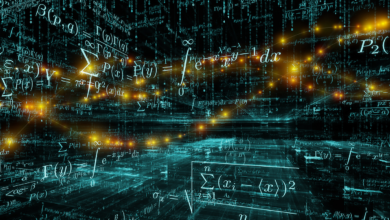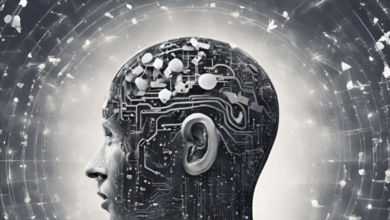
This summary of machine learning with quantum computing is to define terms, to touch on two hugely developing scientific fields and to open your mind as leaders to what will unfold to be the possibilities that lay ahead. I shall release a more technical paper at a later stage with the advances.
What are the basics of quantum computing?
Unlike traditional devices that use transistors and binary data, quantum computers are based on research and development within Quantum Physics. That means the components of these machines are particles that are subatomic in size. We call these quantum bits.
The huge advantage of quantum computing is the actual speed of the computer. The speed is not affected by the actual complexity of the operation, so it solves problems and calculations that are not possible on transitional devices regardless of their processing power.
Which type of problems can quantum computing solve?
As quantum computing is incredibly fast at processing computations it is able to speed up traditional computing requirements but not able to solve problems with undecidable and non-deterministic polynomial-time hard problem classes.
What it can solve are certain problem sets that involve extremely large numbers or huge amounts of data crunching with trillions of inputs and great velocity.
In common language and everyday life, this would include communication system analytical problems and solving problems around hugely complex optimisation problems.
How long would some of these problems take to solve a traditional supercomputer? To this into proportion, in some cases, it would take a traditional supercomputer over 10 million years to solve. Quantum computing could do this same task within a year.
Who is building Quantum Computers?
A variety of well-funded manufacturers are building these machines, including pioneers like IBM. However, Google, in its Google Quantum AI lab is building a quantum computer called Bristlecone. It is an incredible 2-qubit project.
The goal of the Google Quantum AI lab is to develop a quantum computer that can be used to solve real-world problems and explore near-term applications. This would be using systems that are forward compatible with a large-scale and with a universal error-corrected quantum computer.
For a quantum processor to be able to run algorithms beyond the scope of traditional simulations it requires many qubits. This means that’s its processor must also have low error rates on readout and logical operations, such as single and two-qubit gates.
So, now we know what Quantum Computing is and what it runs on, let’s relate it to Artificial Intelligence and Machine Learning.
Artificial Intelligence and machine learning
Artificial Intelligence is a user that is popping up in board room meetings more and more, with a relatively vague understanding of how it can really improve the business, political, social and medical world.
Artificial Intelligence is the belief that machines will be able to think and communicate in the same way as humans, but much quicker and with no error.
Machine Learning is a way of achieving Artificial Intelligence. Artificial Intelligence and Machine Learning has been proven to analyse, understand, interpret, distinguish, and make valuable extremely large data (data sets) in relatively short periods of time.
It then is able to create predictive models and display trends that humans cannot see or certainly don’t have the time to create. We are talking about saving 10,000 years of work, down to a minute.
This is all possible by looking at patterns. Machine Learning has been used for many decades, although the data presented to the machines is now unprecedented in size. Size is the sheer volume we have, that completes the four Vs’ we need and did not have. Volume, veracity, variety, and velocity.
As mentioned, Machine Learning is used in many use cases across the globe However it is the use of Artificial Intelligence as its application that is the most interesting.
Machine Learning Running on Quantum Computing
Running Machine Learning for artificially intelligent solutions with quantum computing thus allows datasets to be analysed and worked on at a hugely faster rate that user traditional machines.
The only human problem here is that you cannot run code these algorithms. In many cases, data scientists or analysts cannot understand the machine’s thought process. Why should they? Machines and humans don’t think alike.
The meeting point of Machine Learning and Quantum Computing is not just contained with the Artificial Intelligent core applications and all that it can benefit. There are also results where quantum computers create and run algorithms as traditional computer type learning methods. They are then used to assess quantum computers.
This area is called Quantum Machine Learning and is a huge area of discussion, research, development, and experimenting. This interdisciplinary field is what takes computing into 2020.
2020 is beginning to see more quantum algorithms which are the fabrication and tapestry for the future of machine learning programs. As the technology for the supporting infrastructure and funding increases to develop functional quantum computers, it reduces the barriers faced by the limits of today’s hardware and software limitations.
Machine Learning and Quantum Computers between 2020 and 2030
In the next decade, quantum computing will allow artificial intelligence as a science to carry out tasks in a much more human way. This is because of the method of carrying out numerous processes simultaneously. To an extent, like a human who is able to rationalise, show empathy as well as consideration.
Solving complex world problems and to give a numerous amount of solutions to them. This quantum process is called RTODM (Real-Time Optimised Decision Making) in lots of practical real-life situations.
This is an advanced method for existing robots like self-driving cars for instance. The new methods go well beyond what we see in the market today with regard to decision making, predictions, and risk aversion.
Between 2020 and 2030 the well-funded companies and universities are making this a swift reality. The issue is, as these machines that are being built are huge in size. They also are irregular shaped and look like something from a science fiction film like the ‘Matrix’. Think of a gigantic brass chandelier with violin strings all around it with a metal shiny rod through its shaft. Hardly what a racked server would like. So, building them, protecting them and maintaining them is also hugely out of the reach of funds less than a billion dollars.
So, in the next years, you will see an increased use of these few super beasts for world problems but certainly will not seem them controlling your car or serving you lunch. Sorry folks, no Irona The Robot Maid between 2020 and 2030.
Traditional Computers and Quantum Computing in tandem in 2020.
As traditional computers themselves get smaller, faster, increase storage capacity and get more affordable, so will Quantum computers.
Quantum computing will hugely advance in the next 50 years and solve important human life-threatening problems and they work side by side with traditional computers, which in actuality are still used to build and develop quantum computers. The creator, and the created chain.
Quantum computing although will have a massive place in making a lot of subroutines better in developing elaborate classical algorithms. And it is these algorithms that can also be run on quantum computers. This is when solutions can be used for business and research outside the practical problem solving and risk aversion processes and needs mentioned above.
Keep yourself updated in this area, by subscribing to my academic research by emailing me at a.kalvani@oxon.org and asking for my papers.





